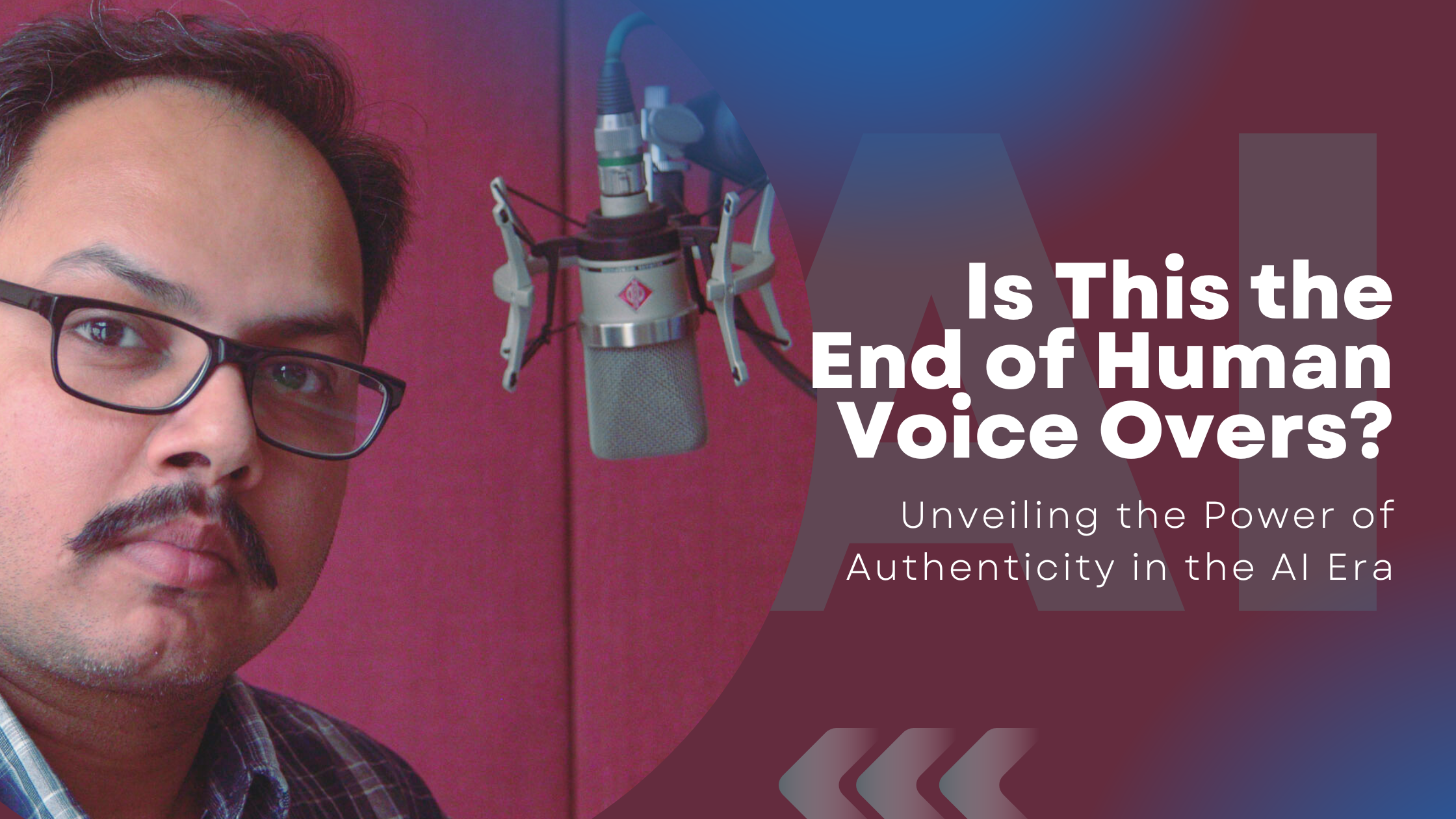Is This the End of Human Voice Overs?

Is This the End of Human Voice Overs? Unveiling the Power of Authenticity in the AI Era
When a news article suggesting that AI voices could soon replace human voice overs landed in my WhatsApp group, it sparked quite the debate. As a professional voice over artist who’s been in the field since 2007, my curiosity was piqued, and when one of our moderators called for opinions, I felt compelled to dive in.
The Rise of AI Voice Technologies
Platforms like Elevenlabs.io are leading the way with incredibly realistic text-to-speech capabilities, which I’ve been noticing more and more, especially in Instagram reels. The technology is impressive, no doubt. But, I’ve observed a certain repetitiveness due to a limited variety of voices. It’s somewhat akin to hearing the same singer in every song —a clear indication of the technology’s current limitations. Although having said that, I’ve explored these platforms and the voice bank is growing steadily.
Yet, there’s an interesting twist to the tale. A lot of these platforms offer voice talents the opportunity to upload their own voice to train their own vocal models, and potentially earning royalties in the future when people use an AI model of their voice. This opens up intriguing possibilities for the future of voice work, blending human creativity with AI efficiency.
The Human Advantage: Emotional Depth and Nuance
Despite AI’s strides, there remains a distinct gap in enunciation, modulation, and emotional conveyance—areas where human voice talents excel by default. We adapt our performances to fit the script’s mood, something AI is still catching up on. While text-to-speech models are improving rapidly, they often fall into a monotonous rhythm, lacking the nuanced delivery that human actors bring to the table.
However, the introduction of speech-to-speech technology by companies like Elevenlabs is a game-changer. It allows voice talents to infuse AI voices with human emotion and nuance, making them more realistic and engaging. This innovation is a step toward narrowing the gap between human and AI performances.
Embracing Change and Innovation
As voice over artists, it’s crucial we understand and engage with these emerging technologies. Not out of fear of being replaced, but to better comprehend our evolving landscape. This insight allows us to highlight the unique qualities that set human voice overs apart.
The reality is, while AI voice technology may offer a lower cost of entry and accessibility, there’s still a significant demand for the authentic, emotive, and nuanced delivery that only human voice talents can provide. Just as there’s a market for mass-produced garments versus bespoke fashion, the same distinction applies to voice overs. Quality, brand identity, and emotional engagement still lead many clients to prefer working with experienced human talents.
Looking Ahead
As we stand at this crossroads, it’s not about choosing between AI and human talent but recognizing the value each brings to the table. By staying informed and open to new technologies, we can find innovative ways to complement our human skills with AI’s capabilities.
So, to my fellow voice artists and anyone curious about the future of our industry, I encourage you to explore these new platforms. Understand their strengths and limitations, and consider how they might enhance your own work. The future is not just AI; it’s a harmonious blend of technology and human creativity, where the authentic, emotive power of the human voice continues to hold a special place.
© 2024, Kunal Agarwal (Sonik Culture Productions).
All rights reserved. No part of this publication may be reproduced, distributed, or transmitted in any form or by any means, including photocopying, recording, or other electronic or mechanical methods, without the prior written permission of the author, except in the case of brief quotations embodied in critical reviews and certain other noncommercial uses permitted by copyright law.